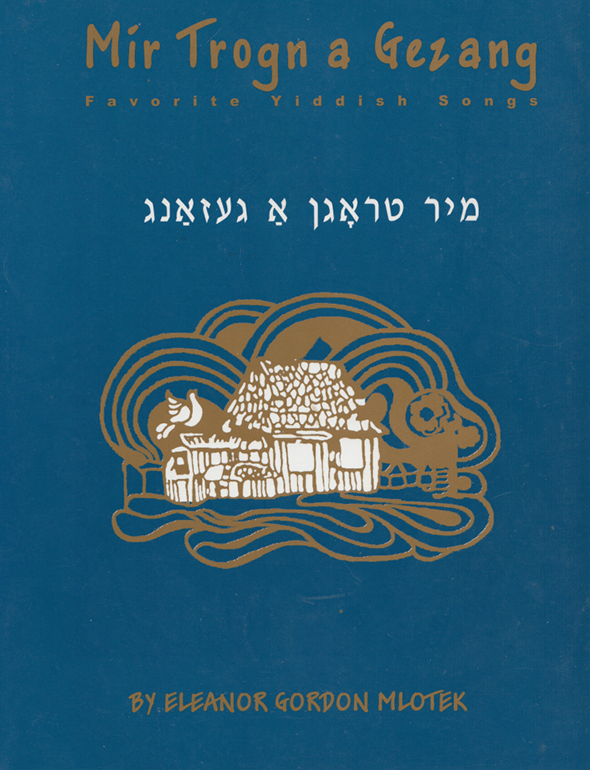Poem by A. Liessin (1882-1938); the music by Meyer Posner (1890-1931) was the contest-winning melody in 1925. Non-literal translation by S.H. Friedman.

Mid the blaze in a world of commotion,
The light of true freedom we sought.
Here at home and far over the ocean
To the forge of our vision we brought
The fire of our love and devotion,
And our own Workmen’s Circle we wrought.
A timeless bond unites us,
A ring of tempered steel.
One radiant beacon lights us
To peace and commonweal.
Stand all for one and one for all,
The working class ideal.
Mir hobn di heymishe flamen
Shoyn tsendliker yorn gehit,
Zey hobn oykh hinter di yamen
Far undz azoy lib nokh geglit.
Zey hobn undz glutik tsuzamen
In ring fun an ordn geshmidt.
Un ale far eynem,
Un eyner far al’ —
Baloykhtn in eynem
Fun eyn ideal.
Dem groysn, dem sheynem —
Fun arbeter-klal!
מיר האָבן די הײמישע פֿלאַמען
שױן צענדליקער יאָרן געהיט,
זײ האָבן אױך הינטער די ימען
פֿאַר אונדז אַזױ ליב נאָך געגליט.
זײ האָבן אונדז גלוטיק צוזאמען
אין רינג פֿון אַן אָרדן געשמידט.
און אַלע פֿאַר אײנעם,
און אײנער פֿאַר אַל׳ —
באַלױכטן אין אײנעם
פֿון אײן אידעאַל.
דעם גרױסן, דעם שײנעם —
פֿון אַרבעטער–כּלל!
Song Title: Arbeter-Ring-Himen

First published in 1972, Mir Trogn A Gezang: Favorite Yiddish Songs was reprinted six more times (in 1977, 1982, 1985, 1987, 1988, 2000) due to popular demand. The songs in this anthology represent a sampling of beloved folk and well-known Yiddish songs, many of which are scattered in various song collections; some appear in very rare and inaccessible collections; and some were never before published. Folk songs comprise about a third of this volume and were selected mainly on the basis of popularity and sometimes for their historic significance. Needless to say, they are only representative of the vast, rich treasure of Yiddish folk material. The selection was made not only on the basis of personal preference, but in the knowledge they are favorites of many who sing these songs. Most of the songs represent the repertoire that was sung at Yiddish summer camps, May 1st demonstrations and at social gatherings. Many songs were introduced to American Jewry by Jewish immigrants who came to the United States after World War II, for whom these songs had been favorites in Poland and other East European communities destroyed by the Nazis.